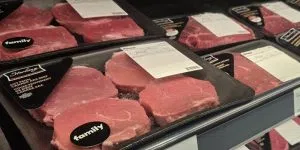Those in the industry feel more needs to be done to track the impact seal predation is having on cod stocks in the province.
The latest DFO modelling shows 3Ps cod deep in the critical zone, prompting meagre quotas to be cut in half. But as processor Alberto Wareham points out, those figures are based on changes made to the modelling.
He says the distinction needs to be made between natural mortality and fishing mortality, which the new model does not take into account.

(Keith Sullivan, file photo.)
FFAW President Keith Sullivan says it’s long been known that cod stocks on the south coast were struggling, and the same will be true of the Northern Cod in other areas, based on the number of seals preying on fish and other species.
“Most fear if we don’t do anything” Sullivan says, “it’ll be the story of what’s going on with the neighbouring cod stock.” He says scientists working in the Gulf of St. Lawrence noted a few years ago that fishing or no fishing, seals were going to devour all the cod and the species could become extinct.
DFO Marine mammal researcher Dr. Garry Stenson says there are six species of seal that frequent Newfoundland waters, each of which have different prey on which they feed.
Seal species include the harbour seal, the range for which extends as far north as southern Labrador, and the grey seal, which is a seasonal migrant.
There are two Arctic species – ringed seals and bearded seals – which migrate south to Newfoundland in the winter, and the harps and hoods that migrate between southern waters and the Arctic.
Each of those species have different population sizes, different habits and different diets, says Stenson.

Hooded seals tend to feed on deep water species “way out” on the edge of the continental shelf, says Stenson, while harps feed primarily on pelagics, but are known to take a wide variety of other species. He says harbour seals feed on smaller species close to shore, and grey seals will take a variety of species, including cod, but mostly deeper water fish – especially sand lance. Bearded seals, a type of seal that is relatively uncommon in Newfoundland, are bottom feeders and will generally eat smaller invertebrates like shrimp, clams and non-commercial crab.
Stenson says scientists have been looking at harbour and grey seals in the 3Ps area, to see what kind of an impact they’re having on salmon and cod stocks.
DFO recently concluded a survey of the grey seal population and expect new numbers this fall, but until now numbers in the entire Atlantic region have been at about 400,000. Of that population, “very low numbers” of the animals make their way into 3Ps he says.
Some small colonies are known in the Burin Peninsula and Miquelon areas as well as the southern shore.






















